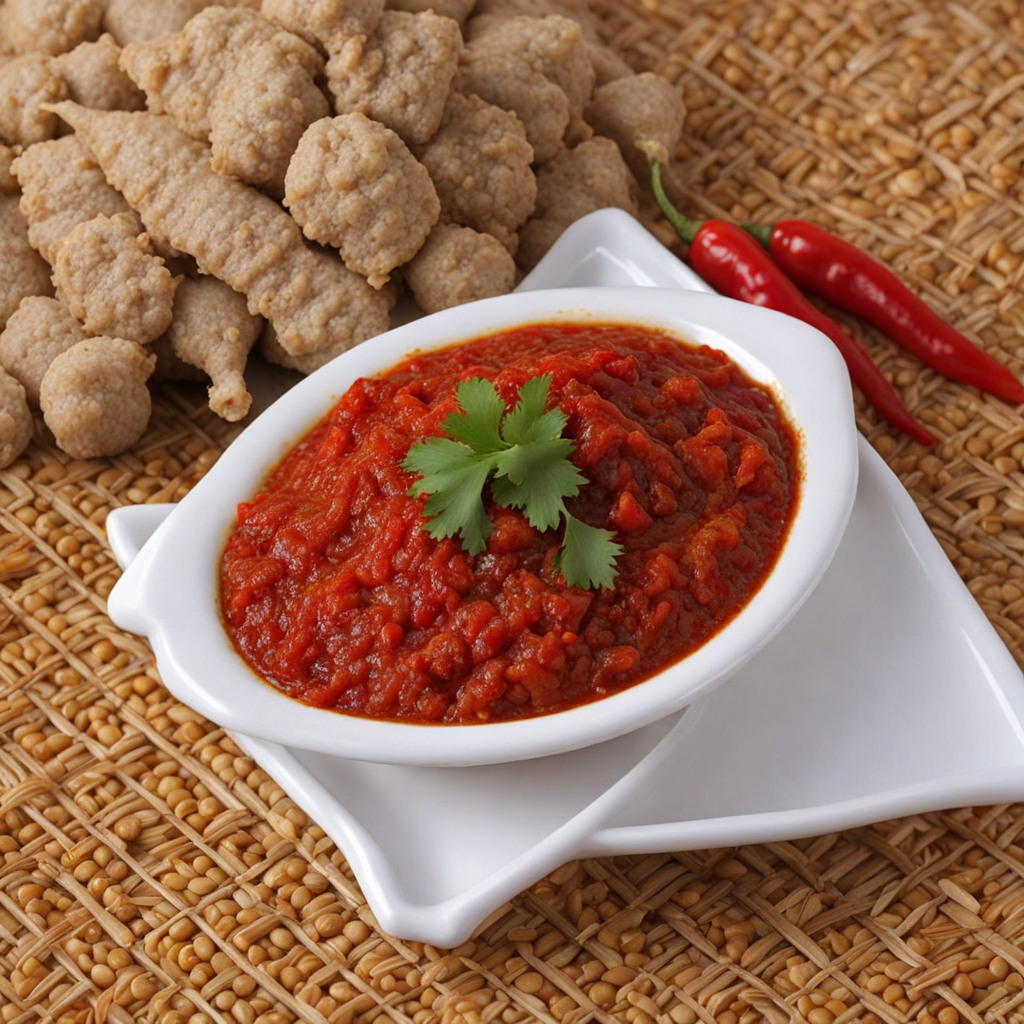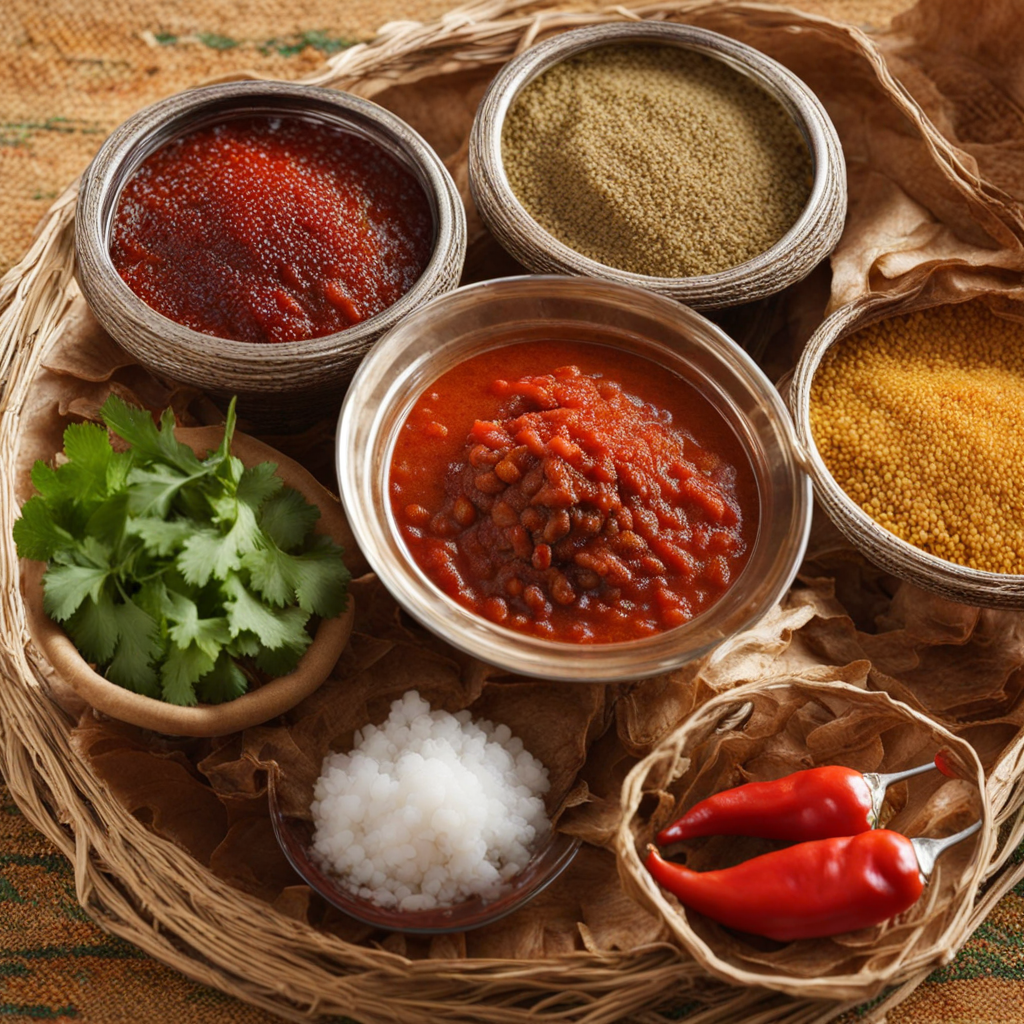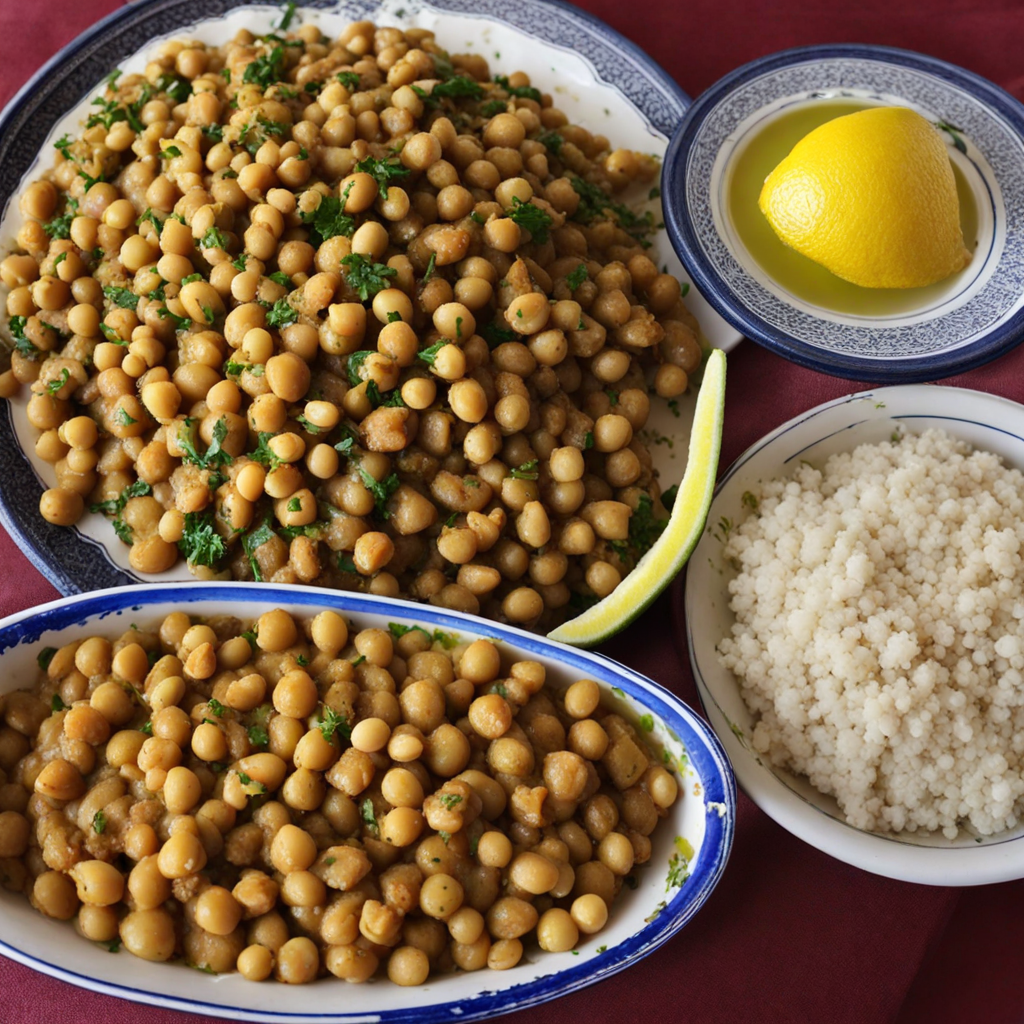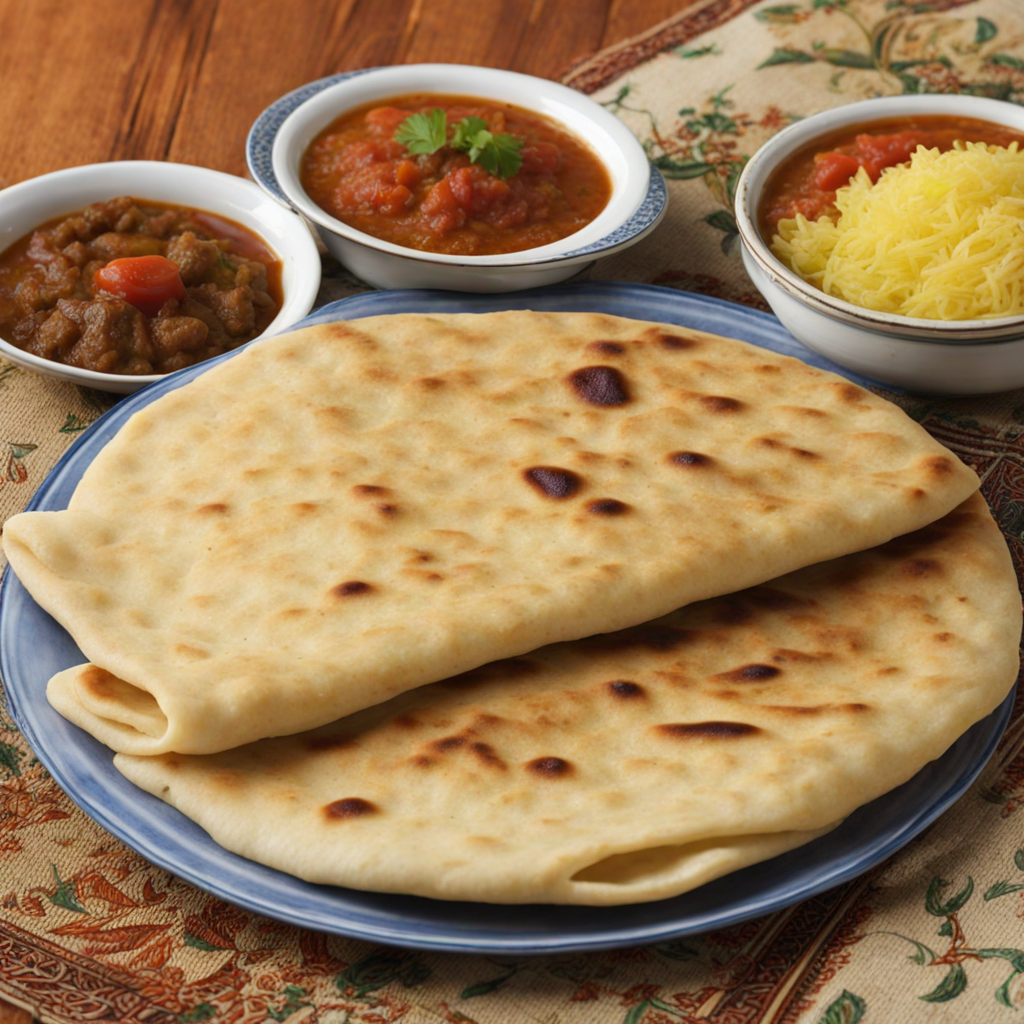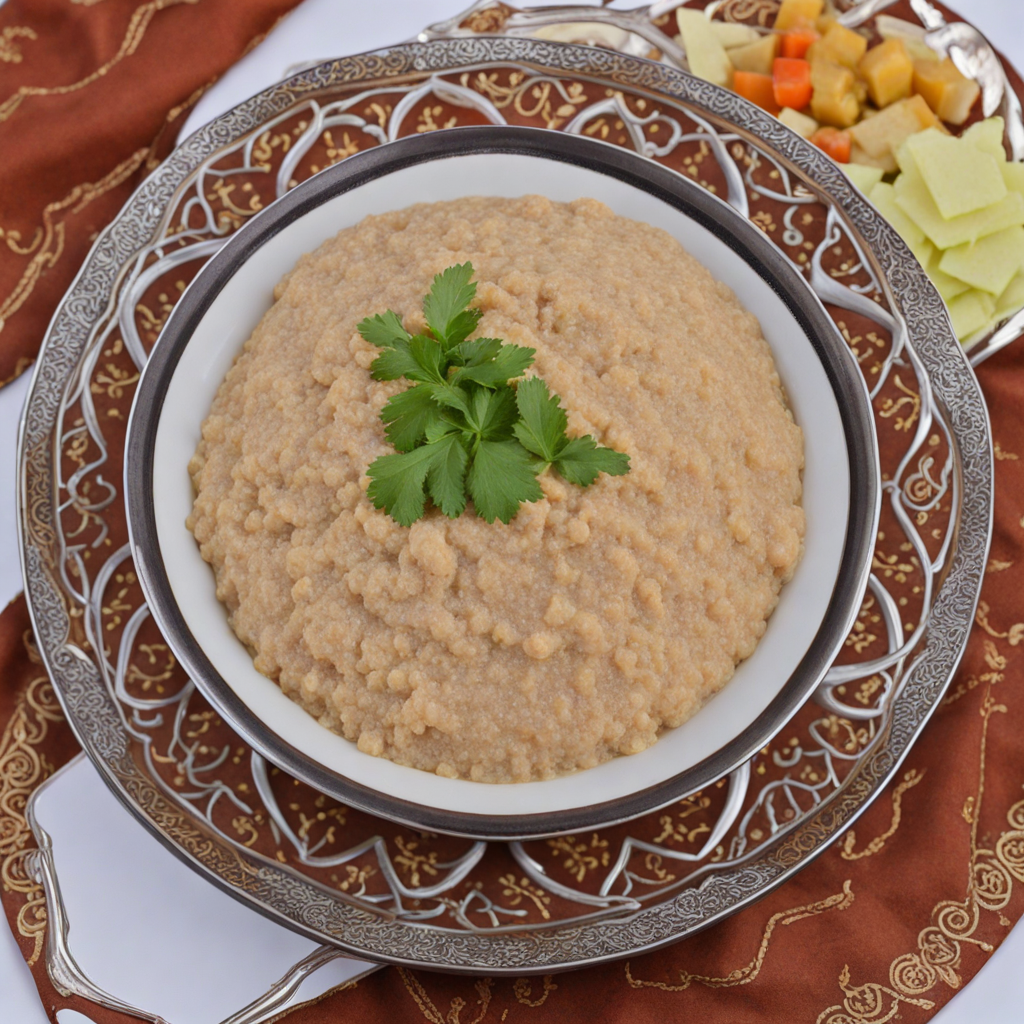Shata
Shata is a vibrant and flavorful condiment hailing from Sudan, known for its ability to elevate any dish with a delightful kick. This chili-based sauce is a staple in Sudanese cuisine, combining a blend of fresh green chilies, garlic, and a variety of spices that create a unique taste profile. The heat level can vary, but it is often paired with a touch of tanginess from lemon juice or vinegar, making it a perfect accompaniment for grilled meats, stews, and even traditional flatbreads. The richness of Shata lies not just in its heat but also in the freshness of its ingredients, which can include herbs like coriander and parsley, adding layers of complexity to its flavor. The preparation of Shata is a labor of love, often made from scratch in homes across Sudan. The chilies are typically roasted or blended into a smooth paste, then mixed with garlic and spices that can include cumin or coriander seeds. This mixture is often allowed to rest, letting the flavors meld and intensify. The result is a vibrant green or red sauce that not only adds a fiery kick but also a burst of color to any meal. Serving Shata alongside a meal is a common practice, as diners can adjust the amount according to their personal taste, making each meal a customizable experience. In addition to its role as a condiment, Shata can also be used as a marinade or a cooking ingredient, infusing dishes with its signature heat and flavor. It pairs beautifully with grilled meats, such as lamb or chicken, and complements hearty stews and lentil dishes, providing a zesty contrast to the richness of the proteins. For those seeking to explore the culinary landscape of Sudan, Shata offers a delicious journey into the heart of its cuisine, inviting adventurous eaters to embrace the bold and vibrant flavors that define this unique and beloved condiment.
How It Became This Dish
The Spicy Journey of شطة (Shatta): A Culinary Treasure of Sudan #### Introduction Shatta, a fiery condiment from Sudan, embodies not just the taste of the region but also the deep-rooted cultural heritage and social practices of its people. This chili-based sauce, often made from a blend of fresh green or red chilies, garlic, spices, and sometimes tomatoes, has evolved into a staple in Sudanese cuisine. Its journey reflects the intersection of geography, climate, and cultural exchanges that have shaped Sudan over centuries. #### Origins of Shatta The origins of shatta can be traced back to the rich culinary traditions of the Horn of Africa, where spices and heat have played a pivotal role in the diet of the local population. Sudan, positioned at the crossroads of Africa and the Middle East, has always been a melting pot of cultures. It is likely that shatta’s roots lie in the ancient trade routes that crisscrossed the region, facilitating the exchange of not only goods but also culinary practices. Chilies, which are the primary ingredient in shatta, were introduced to Africa from the Americas in the late 15th century, following the Columbian Exchange. Their adaptability to various climates allowed them to flourish in Sudan's diverse agricultural landscape. Over time, local farmers began cultivating different varieties, which contributed to the unique flavors of shatta that we know today. #### Cultural Significance In Sudan, food is more than sustenance; it is a vital aspect of social and cultural identity. Shatta holds a special place in this culinary landscape. It is not just a condiment but a symbol of hospitality and warmth. Traditionally, when guests are welcomed into Sudanese homes, a spread of various dishes accompanied by shatta is often presented. The addition of this spicy sauce not only enhances the flavors of staples like stews, grilled meats, and flatbreads (like kisra) but also signifies the host's desire to share a memorable meal. Shatta is also a communal food. In Sudanese culture, meals are often shared, and the act of passing around a bowl of shatta allows for interaction and connection among diners. This condiment bridges generations, as recipes for shatta are often passed down through families, with each generation adding its unique twist. As such, it becomes a personal and cultural narrative, encapsulating memories of gatherings and celebrations. #### Development Over Time The evolution of shatta mirrors the historical changes in Sudan. During the Ottoman Empire's rule in the 16th century, trade flourished, and culinary practices began to blend. Influences from Turkish, Egyptian, and other Middle Eastern cuisines introduced new spices and techniques, enriching the flavor profile of shatta. The introduction of vinegar and various herbs created variations that cater to different palates, making shatta versatile. In the 19th and early 20th centuries, as Sudan experienced colonial rule, the culinary landscape continued to evolve. The British occupation introduced new ingredients and preservation methods, such as canning, which allowed shatta to be made in larger quantities and stored for longer periods. This led to a gradual shift from homemade versions to commercially produced shatta, making it more accessible to urban populations. The late 20th century brought about significant political and social changes in Sudan, including civil wars and economic challenges. These events affected agricultural practices and food availability, which, in turn, influenced how shatta was prepared and consumed. During times of scarcity, Sudanese families became resourceful, adapting the recipe to include whatever ingredients were available, resulting in an even greater diversity of shatta variants. #### Contemporary Shatta Today, shatta remains a beloved staple in Sudanese households and is gaining recognition beyond its borders. With the rise of globalization and the internet, Sudanese diaspora communities around the world are reintroducing shatta to a broader audience. Food blogs, social media, and cooking channels showcase the preparation of shatta, sparking interest in Sudanese cuisine as a whole. Modern interpretations of shatta can be found in restaurants that serve Sudanese and North African cuisine, where chefs experiment with new flavors, textures, and presentations. Some incorporate local ingredients from their new homelands, creating fusion versions that resonate with both traditional and contemporary tastes. The growing interest in spicy foods globally has also contributed to shatta’s popularity, as adventurous eaters seek out authentic and unique culinary experiences. #### The Future of Shatta As we look to the future, the significance of shatta is likely to continue evolving. With an increasing emphasis on heritage and identity in global culinary trends, shatta stands poised to reclaim its status as a symbol of Sudanese culture. There is an opportunity for culinary historians and chefs alike to explore its roots, ensuring that shatta maintains its relevance in an ever-changing food landscape. Moreover, as sustainability becomes a pivotal concern in agriculture and food production, the cultivation of local chili varieties could see a resurgence. This would not only preserve traditional farming practices but also enhance the local economy. Educational initiatives around Sudanese cuisine could further promote shatta as both a culinary delight and a cultural artifact, fostering appreciation for its rich history. #### Conclusion Shatta is more than a simple condiment; it is a reflection of Sudan's complex history, cultural significance, and evolving culinary practices. From its origins rooted in the ancient exchanges of spices to its status as a symbol of hospitality and community, shatta encapsulates the spirit of Sudanese identity. As this fiery sauce continues to adapt and flourish in a modern world, it carries with it the stories, flavors, and traditions of a people whose culinary heritage deserves recognition and celebration. Whether enjoyed at a family gathering or in a bustling restaurant, shatta remains a testament to the enduring power of food as a connector of cultures and generations.
You may like
Discover local flavors from Sudan


